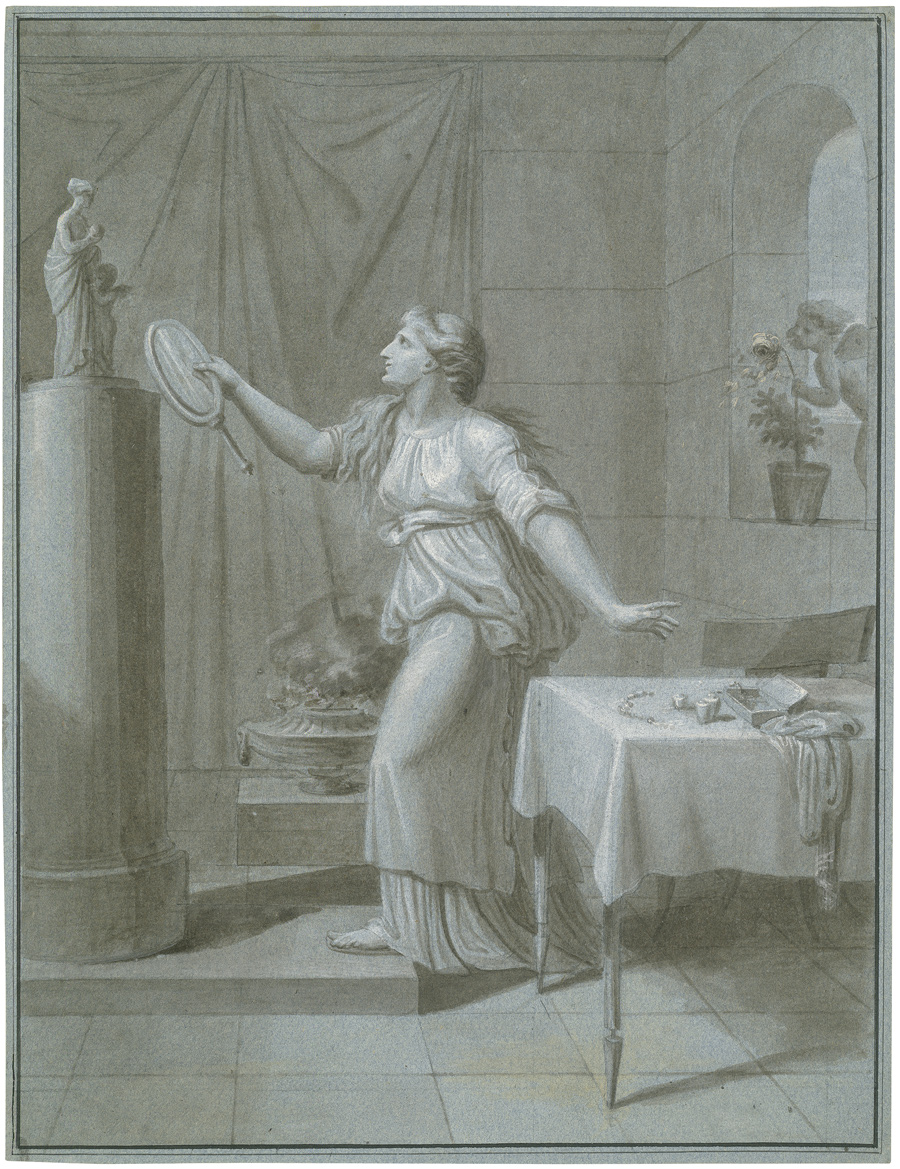Loading the page ...
Eberhard Wächter
(1762 Balingen – 1852 Stuttgart)
The Mirror of Lais. Pen and point of brush and greyish-brown ink over graphite, white heightening, on blue paper. 32.8 x 24.8 cm. Old lettering in pencil on the cardboard mounting: „Der Spiegel der Lais. / Orig. Karton von Waechter /zum Taschenbuch für Damen 1802“.
A painter of historical scenes, Eberhard Wächter underwent a remarkable artistic training. In the years 1781–1783 he studied under Nicolas Guibal and Adolf Friedrich Harper at the Hohe Karlsschule in Stuttgart and in 1784 continued to teach himself in Mannheim. In 1785 he went to Paris, where he took tuition from such well-known artists as Jean-Baptiste Regnault, Jacques-Louis David and Antoine-Jean Gros. In 1793 he spent a short time in Stuttgart before proceeding the following year to Rome, where he was to live and work until 1798. In Italy Wächter adopted the Catholic faith and maintained friendly relations with Joseph Anton Koch and Asmus Jakob Carstens. In 1798 a lack of commissions finally forced him to move to Vienna, where he earned his living as a book illustrator for the Cotta Verlag publishing house. In Vienna he influenced such future Nazarene artists as Friedrich Overbeck and Franz Pforr, who discovered in his art signs of renewal (see P. Koster, Eberhard Wächter (1762–1852). Ein Maler des deutschen Klassizismus, Bonn, 1968, pp. 129–130). In 1808, Wächter set off for Rome again but was held up in Stuttgart by the turmoil of the Napoleonic Wars. Wächter was to spend the rest of his long life in Stuttgart where, in self-imposed isolation, he embarked upon a modest career as a painter of historical scenes and, from 1810 to 1817, held the post of Inspector of the Royal Engravings Collection. Wächter’s painting was marked by formal severity and a purist interpretation of Classicism, a view shared by many young artists in his time.
This drawing by Wächter served as the original for a book illustration. It shows a scene from the story The Mirror of Lais written by Ludwig Ferdinand Huber (1764 Paris – 1804 Ulm) and published in the Taschenbuch für Damen auf das Jahr 1802 (Tübingen, 1802, pp. 164–166). The story concerns a once enchantingly beautiful Greek courtesan called Lais, who with the passage of time can no longer bear to look at her reflection in the mirror and so dedicates the latter to Aphrodite, the Goddess of Love. The story has its origins in an epigram that used to be attributed to Plato, but is of more recent date. The episode served the purpose of moral upbringing, for the moral of the story is that a young woman who is all too confident of her physical charms will in time become convinced of the opposite. This message fitted perfectly in the context of the uplifting pocket books for ladies which were very much en vogue in the first half of the 19th century.
